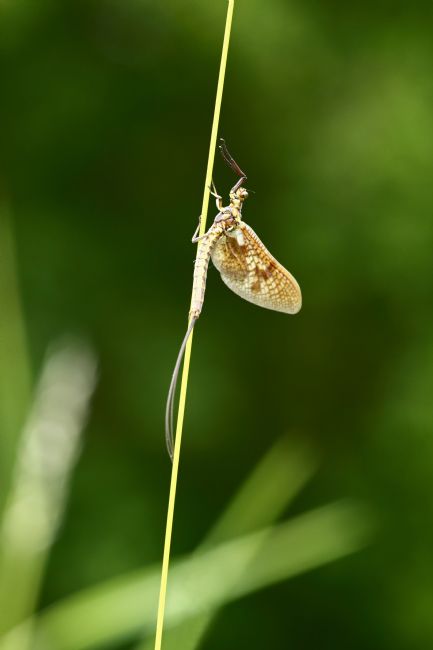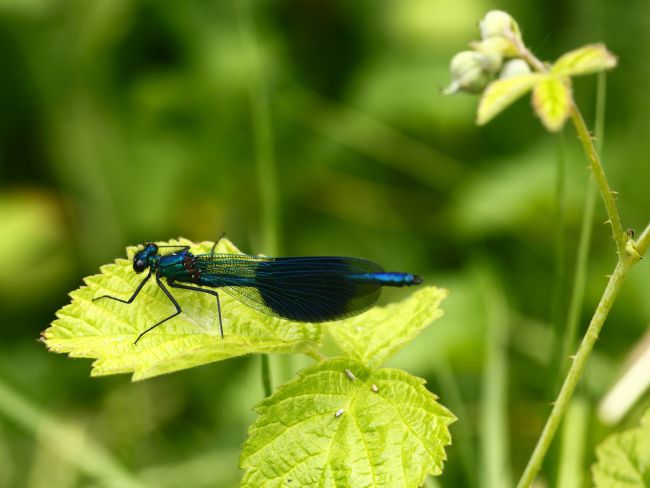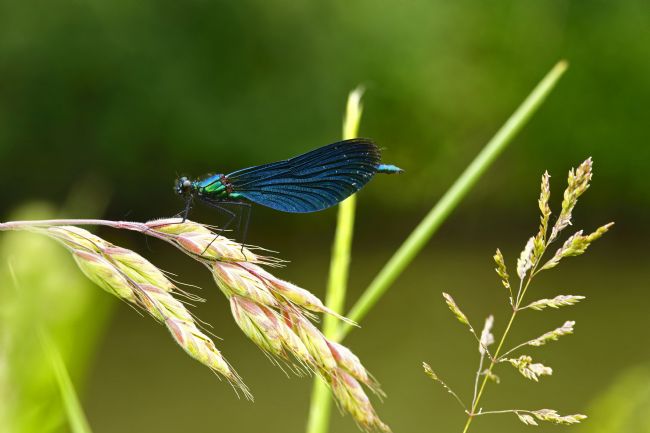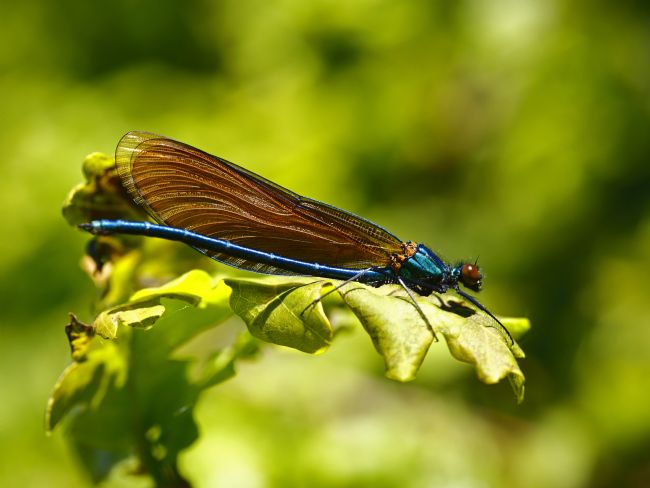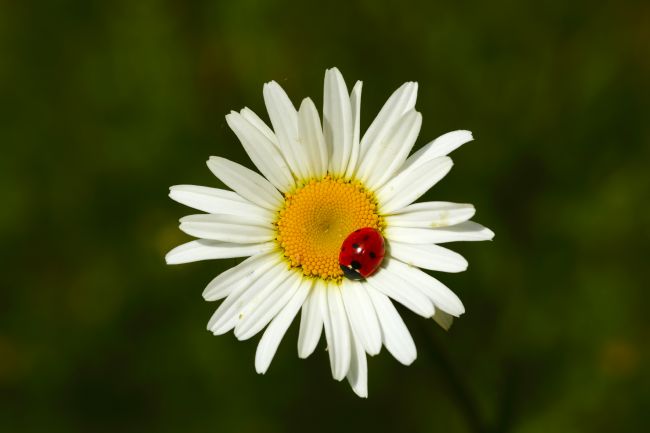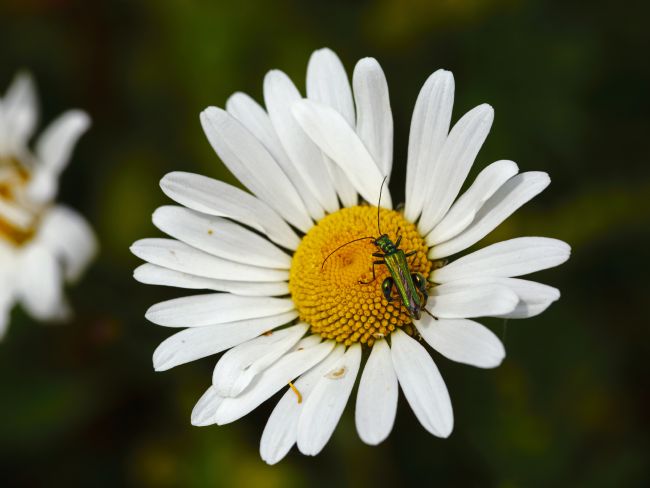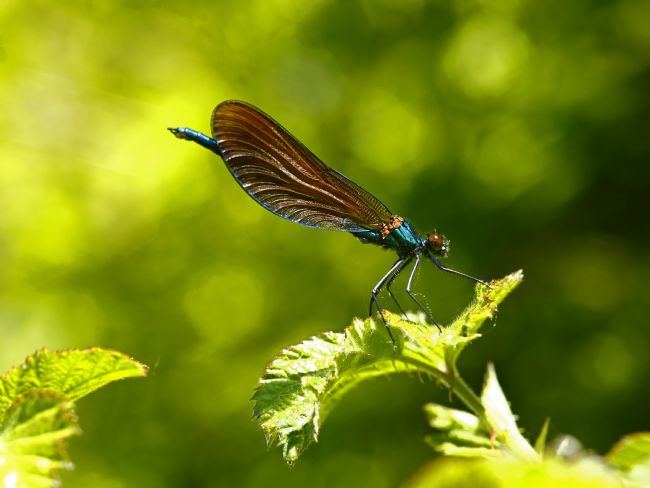Mayflies are aquatic insects, the naiads or nymphs live on the bottoms of rivers. Thy are unusual in that they have 2 adult stages in their lifecycle. When the time comes the nymphs moult into winged intermediate adult stage (called a subimago) and emerge from the water, often by climbing using the stems of aquatic plants as in this image. They then undergo a final moult into the breeding adult (or imago).
There are 51 species of mayfly found in the British Isles, and over 3,000 worldwide. I'm not exactly sure which species this one is; it could be the March brown mayfly (Rhithrogena germanica, famous for copies being one of the most popular artificial flies used for fly fishing) or the similar and more widespread late March brown or false March brown (Ecdyonurus venosus).
The Banded Demoiselle damselfly (Calopteryx splendens) is a common damselfly in southern parts of the UK and is also found in much of Europe and Asia. It is commonly found near slow-flowing streams and rivers in the summer months. The dark blue inky patch on the wings show this is a male; females have transparent wings and are greener in colour.
The beautiful demoiselle damselfly, (Calopteryx virgo) is a common damselfly in southern and western parts of the UK. It is commonly found along fast-flowing streams and rivers in the summer months. The dark blue wings show this is a male; females have brownish orange wings their bodies are greener in colour.
The beautiful demoiselle damselfly, (Calopteryx virgo) is a common damselfly in southern and western parts of the UK and is also found in most of Europe. It is usually found near fast-flowing streams and rivers in the summer months. The brownish orange wings show this is a female; males have dark blue wings and their bodies are more blue in colour.
A seven-spot ladybird (Coccinella septempunctata) on the flower of an ox-eye / oxeye daisy (Leucanthemum vulgare). Ladybirds are members of the Coccinellidae family of beetles, popular and well known for their bright colours and patterns. The seven-spot ladybird is the most common species in Europe. Ox-eye daisies are a large daisy that can grow to 60cm / 24" or more in height and are native to Europe and western temperate Asia.
A thick-legged flower beetle (Oedemera nobilis) on the flower of an ox-eye / oxeye daisy (Leucanthemum vulgare). They are a common and distinctive beetle in most of western Europe, especially Mediterranean regions (where they are also found in North Africa). Since the mid 1990s they have also expanded to the British Isles and are now quite common in southern England too. Only the males have the thick bulbous hind legs.
The beautiful demoiselle damselfly, (Calopteryx virgo) is a common damselfly in southern and western parts of the UK and is also found in most of Europe. It is usually found near fast-flowing streams and rivers in the summer months. The brownish orange wings show this is a female; males have dark blue wings and their bodies are more blue in colour.
